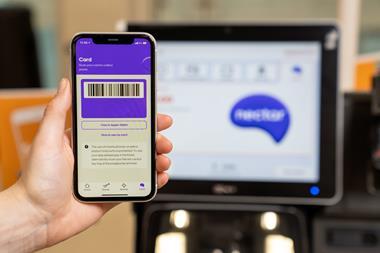>>creativity is key to success of independents - John Weaver, commercial director at Petty, Wood
Sainsbury’s acquisition of Jacksons sets another high-tide point as waves of acquisitions continue to sweep over the independent trade. With every acquisition in an increasingly cartel-like market, a cursory glance would see the role of independent retailers at best diminished and at worst marginalised into insignificance.
Industry statistics show that during the past three decades the independent trade’s value share has crumbled from 43% to 5%.
The reasons for this fall from retail grace include the independents’ loss of the major inventory shopping occasion and the demise of rural grocery outlets as Britain’s population becomes urbanised.
Whatever the background, two-thirds of grocery outlets in Britain are still independent. While the headlines would appear to confirm retail victory for the corporate world, it is unlikely that the 55,000 remaining independent retail outlets will just go away.
So how do these independent retailers survive and prosper in the modern retail environment? Those independent retailers blessed by remote location or otherwise favourable socio-demographics will clearly continue to thrive, no matter how the corporate world chooses to manifest itself in and around major conurbations.
It is from those retailers that have changed their operations to enable them to compete effectively that we can learn something of use.
These retailers have relinquished the battle for the best priced grocery basket and instead have made their stores a regular destination shop by offering a combination of quality product ranges and genuine customer service based on an understanding of their catchment area and their target customer.
These retailers are in essence pursuing the strategic target of sustainable competitive advantage. They have opted to excel in terms of quality of range and service, thereby differentiating themselves from price-leading competitors with, for them, unattainable buying power. These successful independent retailers are aware of the role they can play in maintaining choice for their customers.
Their flexibility enables them to manoeuvre where larger businesses cannot. While multiple retailers are burdened either by the intelligibility of their vast amounts of
data at a local level, or simply by lazy buying, independent retailers are largely free from over-generalised benchmarks. They can move nimbly to select profitable ranges and even offer adjacent services that will generate footfall through being different, unique or appealing within a particular geographical area.
If independent retailers have this freedom to offer greater choice on behalf of their customers, are they exercising it? Our experience at Petty, Wood is that the retailer’s challenge is to be able to source these ranges efficiently and with confidence that commercial viability, sustainability of supply and detailed product advice are assured.
Petty, Wood has been supplying the grocery trade for almost two centuries. More recently, over the past three decades, we have provided a one-stop shop for fine food brands such as Walkers Shortbread, Duchy and Epicure through to more mainstream offerings such as Patak’s, Sacla’ and Weight Watchers, enabling the independent retailer to buy up to 1,500 quality product lines in one order. Far from having to shut up shop, those independent retailers that creatively exercise choice are thriving.
Even taking the long-term view, whereby historical cycles can be typified by concentration followed by fragmentation, it is unlikely that we will see in our lifetimes a resurgence of the independent trade to the levels enjoyed more than 30 years ago.
If independent retailers can appeal to customers by being a different, relevant and therefore an important integral part of the community, they will generate greater commercial interest and loyalty.
>>P42 Big boys but out of shape
Sainsbury’s acquisition of Jacksons sets another high-tide point as waves of acquisitions continue to sweep over the independent trade. With every acquisition in an increasingly cartel-like market, a cursory glance would see the role of independent retailers at best diminished and at worst marginalised into insignificance.
Industry statistics show that during the past three decades the independent trade’s value share has crumbled from 43% to 5%.
The reasons for this fall from retail grace include the independents’ loss of the major inventory shopping occasion and the demise of rural grocery outlets as Britain’s population becomes urbanised.
Whatever the background, two-thirds of grocery outlets in Britain are still independent. While the headlines would appear to confirm retail victory for the corporate world, it is unlikely that the 55,000 remaining independent retail outlets will just go away.
So how do these independent retailers survive and prosper in the modern retail environment? Those independent retailers blessed by remote location or otherwise favourable socio-demographics will clearly continue to thrive, no matter how the corporate world chooses to manifest itself in and around major conurbations.
It is from those retailers that have changed their operations to enable them to compete effectively that we can learn something of use.
These retailers have relinquished the battle for the best priced grocery basket and instead have made their stores a regular destination shop by offering a combination of quality product ranges and genuine customer service based on an understanding of their catchment area and their target customer.
These retailers are in essence pursuing the strategic target of sustainable competitive advantage. They have opted to excel in terms of quality of range and service, thereby differentiating themselves from price-leading competitors with, for them, unattainable buying power. These successful independent retailers are aware of the role they can play in maintaining choice for their customers.
Their flexibility enables them to manoeuvre where larger businesses cannot. While multiple retailers are burdened either by the intelligibility of their vast amounts of
data at a local level, or simply by lazy buying, independent retailers are largely free from over-generalised benchmarks. They can move nimbly to select profitable ranges and even offer adjacent services that will generate footfall through being different, unique or appealing within a particular geographical area.
If independent retailers have this freedom to offer greater choice on behalf of their customers, are they exercising it? Our experience at Petty, Wood is that the retailer’s challenge is to be able to source these ranges efficiently and with confidence that commercial viability, sustainability of supply and detailed product advice are assured.
Petty, Wood has been supplying the grocery trade for almost two centuries. More recently, over the past three decades, we have provided a one-stop shop for fine food brands such as Walkers Shortbread, Duchy and Epicure through to more mainstream offerings such as Patak’s, Sacla’ and Weight Watchers, enabling the independent retailer to buy up to 1,500 quality product lines in one order. Far from having to shut up shop, those independent retailers that creatively exercise choice are thriving.
Even taking the long-term view, whereby historical cycles can be typified by concentration followed by fragmentation, it is unlikely that we will see in our lifetimes a resurgence of the independent trade to the levels enjoyed more than 30 years ago.
If independent retailers can appeal to customers by being a different, relevant and therefore an important integral part of the community, they will generate greater commercial interest and loyalty.
>>P42 Big boys but out of shape


















No comments yet